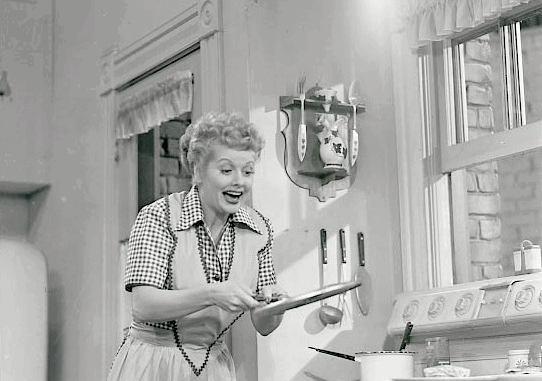
It began on an October night in 1951. Millions of Americans huddled around boxy television sets, the screen flickering in black-and-white as a redheaded woman with a mischievous grin entered their lives. They didn’t know it yet, but I Love Lucy wasn’t just another sitcom — it was the start of a cultural phenomenon that would echo through the next seven decades.
A Revolution in a Living Room
Lucille Ball and Desi Arnaz were already trailblazers before I Love Lucy ever aired. She was a Hollywood actress tired of forgettable roles; he was a Cuban bandleader with a dream of owning the stage. When Ball refused to do the sitcom without Arnaz as her on-screen husband, CBS hesitated. A mixed-race couple in 1950s primetime? Unheard of. But Ball didn’t flinch.
The gamble paid off. In its very first season, I Love Lucy became the number-one show in America — a spot it held for an unprecedented four consecutive years. By its final season, it had never ranked below third place. No other sitcom had managed that feat.
Changing the DNA of Television
The secret to the show’s endurance isn’t just in its comedy — it’s in its innovation. Ball and Arnaz, through their company Desilu Productions, revolutionized the industry by filming on 35mm film before a live studio audience. This decision preserved the show in pristine quality, allowing reruns to remain as sharp and vibrant as the day they were first aired.
They also pioneered the three-camera system still used in sitcoms today, allowing for dynamic editing and natural comedic timing. Without Lucy, there might be no Friends, no Seinfeld, no The Big Bang Theory.
Lucy’s Timeless Magic
Part of the show’s staying power is Lucy Ricardo herself — a character equal parts charm and chaos. Whether scheming to get into Ricky’s nightclub act or wrestling with a chocolate conveyor belt, Lucy’s antics are universal. You don’t need to understand 1950s America to laugh at her; her comedy speaks to anyone who’s ever had a wild idea go wrong.
Even now, social media platforms like TikTok and Instagram are flooded with clips of Lucy’s grape-stomping, her disastrous French lesson, and her slapstick cooking disasters — proof that her humor transcends generations.
A Legacy That Refuses to Fade
Most TV shows vanish once the cameras stop rolling. I Love Lucy didn’t just survive; it thrived. It’s aired in more than 80 countries, been translated into dozens of languages, and continues to draw millions of viewers in syndication and streaming.
Lucille Ball passed away in 1989, but her influence hasn’t slowed. From young comedians citing her as an inspiration to modern sitcoms borrowing her timing, Lucy remains the gold standard for television comedy.
More than seven decades later, the laughter hasn’t dimmed. The sets may be old, the costumes vintage, but I Love Lucy’s spirit is electric — a living reminder that true comedy never ages.
And perhaps that’s the secret to its immortality: I Love Lucy isn’t just a show you watch. It’s a show you fall in love with — again and again, forever.
